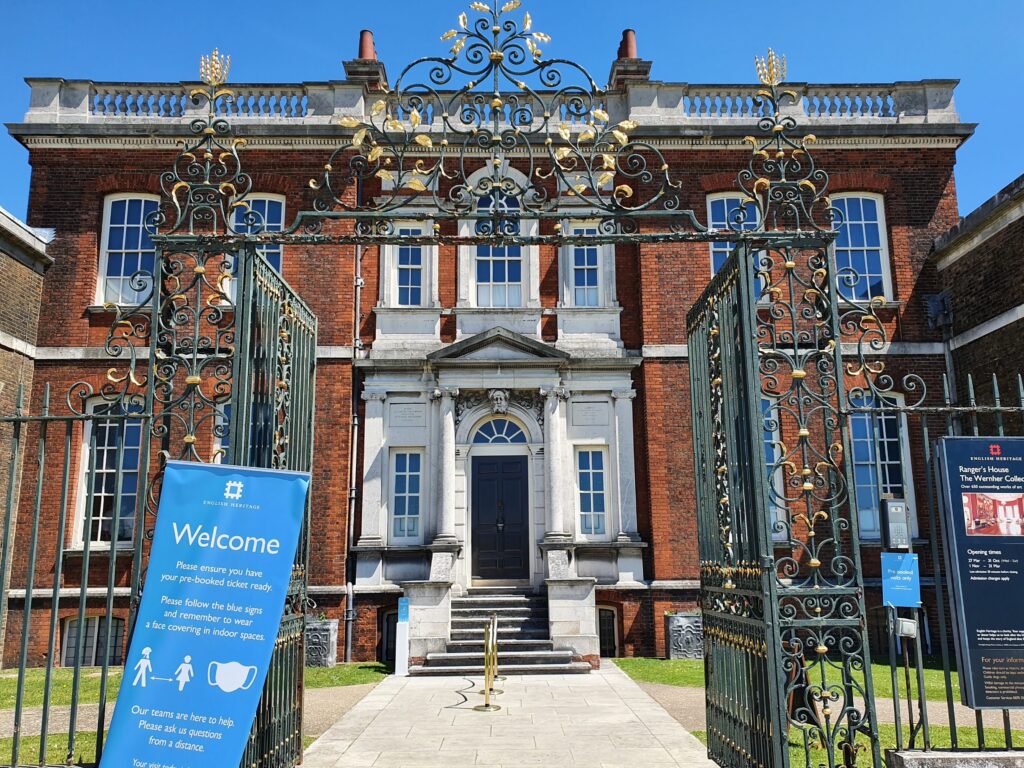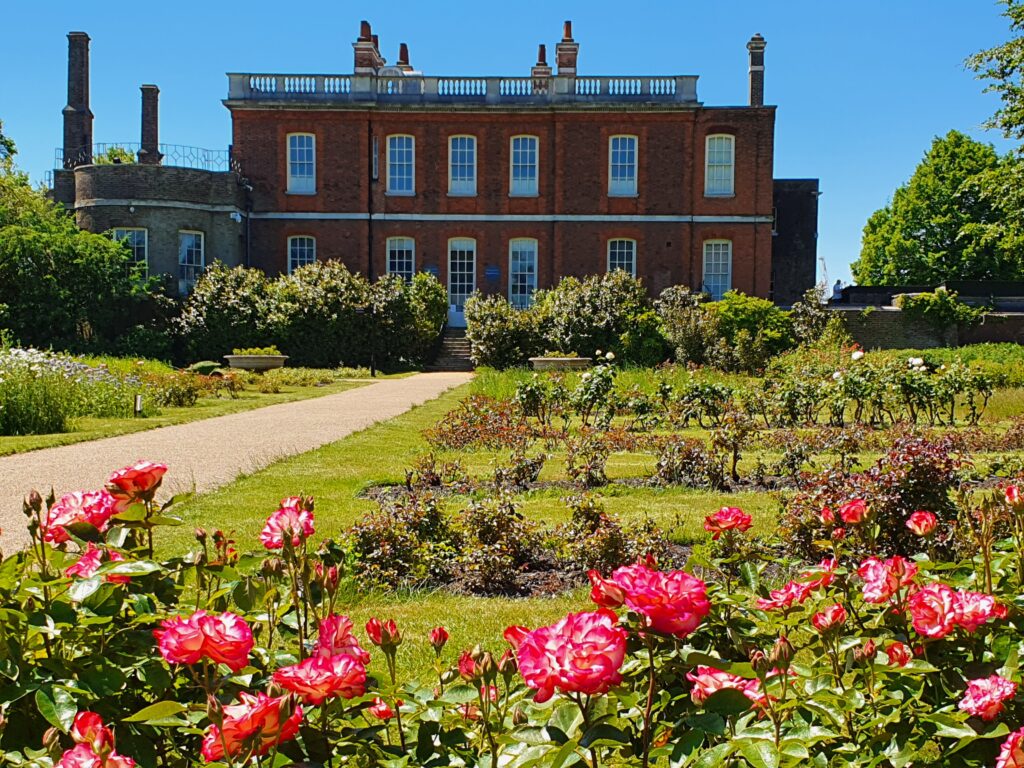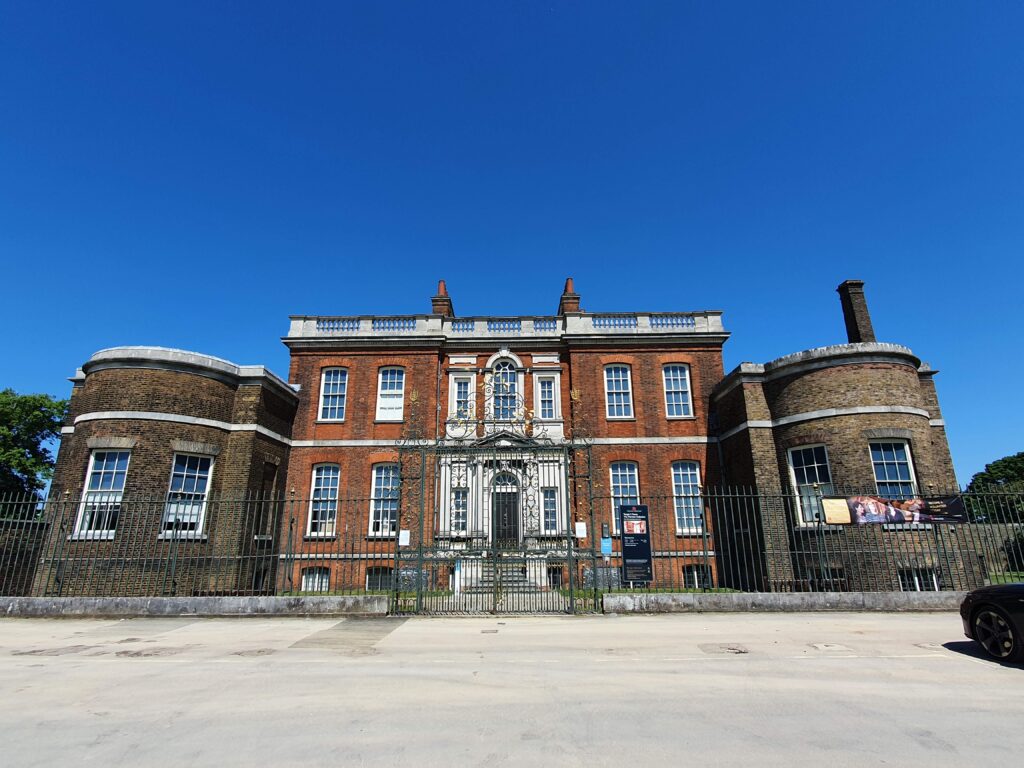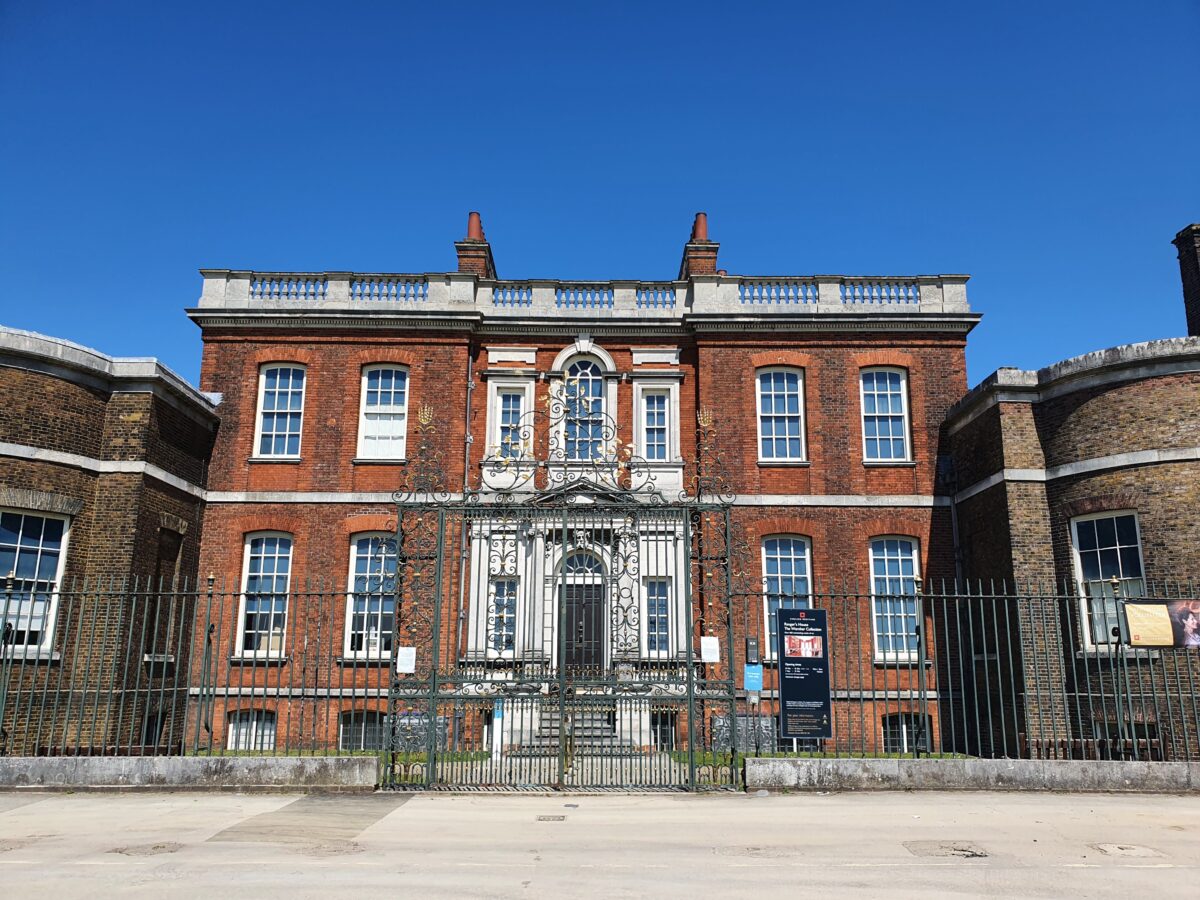The Ranger’s House in Greenwich has achieved recent celebrity with its role in hit Netflix drama Bridgerton, where the building’s exterior plays the part of ‘Bridgerton House’, home of the fictional Bridgerton family, transported to a CGI version of Grosvenor Square in central London, in 1813. In reality this 18th-century mansion is located on a green hill outside Greenwich in south-east London, and houses a small and quirky art collection.
Greenwich is one of the best destinations for a varied London day out, but of the crowds who visit the big attractions near the Thames, few head up the hill to this more hidden treasure. Built to take advantage of the green surroundings and impressive views, the brick Ranger’s House was first home to a naval captain, and later to Lord Chesterfield before becoming the residence of the Ranger of Greenwich Park – an honorary position awarded by the monarch. The first Ranger to live in this building was Princess Sophia Matilda, a niece of George III. The previous residence, standing alongside, was demolished but had been home to Queen Caroline – read on for how to see a surprising relic of this dwelling.

Nowadays the Ranger’s House is in the hands of English Heritage and houses a long-term loan: a collection of art assembled by the diamond magnate and collector Sir Julius Wernher (1850-1912). The Wernhers had no connection to this building, but the mansion’s interior has been arranged to evoke the grand rooms of their homes, Bath House, Piccadilly and Luton Hoo in Bedfordshire. There are some fine artworks, and some unusual curiosities to admire; Wernher said his passion was for the ‘splendidly ugly’. The Ranger’s House is worth the uphill walk from central Greenwich to visit, can be combined with a roam through the fabulous parkland and is free to English Heritage members, so it’s a great place to visit for many reasons, not least if you are on a budget staycation.
I visited while Covid precautionary measures were in place; booking ahead the evening before (plenty of slots available). Detailed catalogues for each room had been removed for hygiene reasons, replaced by a QR code to access a webpage with room information and highlighted objects. Guides were on hand to help identify the many fascinating exhibits not included in the online companion. Photography isn’t allowed, though guidebooks and free postcards were available from the small shop (along with fudge, fruit wine and other treats).
With the collection encompassing artworks from tiny jewels to marble sculptures, there is a lot of variety to take in, but the collection is small enough to be manageable and enjoyable, rather than overwhelming.

Paintings
One of the collection’s most celebrated pieces is a painting from the workshop of Botticelli, a version of the elegant Madonna of the Pomegranate, but my favourites were two other Italian Renaissance paintings, unlabelled but identified for me by the friendly guides: Rest on the Flight into Egypt by Filippino Lippi, with its lovely background details, and a Madonna with Saints, listed as by a follower of Il Francia. I haven’t managed to find out much about the latter painting, though in the past it appears to have been attributed to Francesco Francia himself. (I first discovered the works of this artist, real name Francesco Raibolini, c.1447-1517, in the Pinacoteca Nazionale in Bologna, where his paintings and the faces in them really stood out for me). I regret not being able to photograph or find a good reproduction of this painting; in which I particularly admired one of the saints – I think identifiable as St Nicholas.
Memento Mori
One of Sir Julius’s special interests was evidently the memento mori. There are a number of these reminders of death and mortality on display here, including a tiny intricately-carved boxwood coffin which can be opened to reveal panels depicting the Last Judgement, a decomposing corpse and a skeleton. Another exquisitely crafted memento mori is a two-sided ivory pendant: one one side, a well-dressed woman, on the other side a rotting skull covered with scavenging creepy-crawlies, and the words ECCE FINE (Here is the End) on the forehead.
Jewels, ceramics and more
Another of my highlights of the Ranger’s House Wernher Collection was the Jewellery Vault, filled with exquisite rings, cameos and seals, mostly Renaissance but also featuring the oldest object in the museum, a Greek Hellenistic gold earring depicting Nike, her wings aloft, dated to the 2nd Century BC.
The collection of ceramics is also very fine, including some handsome Italian Renaissance maiolica, and a magnificent dish from France with a moulded eel slithering across its surface.
Grand reception rooms on the lower floor are decorated in keeping with the homes of the Wernhers where they were once displayed. Paintings include fine portraits by Joshua Reynolds.
The walls of the elegant Long Gallery are hung with historic tapestries and the room’s focal point is the seductive (or sickly-sweet, depending on your tastes) 19th-century marble sculpture titled The Love of Angels, by Giulio Bergonzoli.

Outside the Ranger’s House: rose garden and ruins
The Ranger’s House now has a rather downbeat vista looking over lawns and a main road. If you’re a Bridgerton fan, of course, you will want to take the obligatory selfies at the front of the house. But afterwards, head through a small gateway in the garden at the side of the building, and you’ll find yourself in a far more romantic environment, the beautiful rose garden of Greenwich Park. When I visited, some of the beds were filled with wild flowers and between these colourful displays, alive with insects, and the luxuriant blooming roses, the garden was a wonderful setting to sit and admire the mansion, think about the art, or just plan your next move. Greenwich Park, one of London’s Royal Parks, is a remarkable, beautiful place to explore, and I’ll write about its riches another time.

Before you head away from the Ranger’s House, though, just walk for a few yards away from the rose garden along the park’s inner perimeter to the south (to your left as you look at the rear of the house). Here, by a hedge and against a wall, is a surviving feature from Montague (or Montagu) House, once home to Princess Caroline, later Queen Caroline, estranged wife of the future George IV. Princess Caroline’s Bath is exactly what it says it is: a sunken tiled bath, all that is left of the building demolished in 1815.

How to get to the Ranger’s House in Greenwich
From Greenwich’s ‘main attractions’ near the Thames and the Cutty Sark DLR station, Ranger’s House is a 10-15-minute walk uphill through the park, a very pleasant, green and scenic stroll. It’s located on the park’s western boundary (head towards the right-hand perimeter as you head up the slopes).
The entrance to the house faces away from the park, on a lane called Chesterfield Walk. But from the rose garden within the park you can reach the entrance by following English Heritage signs through the small gateway in the garden wall. Alternatively, there is a gateway from the park out towards Chesterfield Walk a little way north of the house, called Croom’s Hill Gate, a route which passes some other handsome buildings. A printable map of the park is available on the Royal Parks website (see below), and this is a useful tool to take to help make the most of your visit.
I actually walked to Greenwich from central London, which is entirely do-able – allow 2.5 – 3 hours from the City of London, and enjoy a scenic hike along the Thames, or cut some time off with shortcuts by road.
If you’d rather not walk, and would like to avoid the uphill stretch from central Greenwich, there are limited parking spaces at the house (check the English Heritage website), and it is on bus route 53, which passes Deptford Bridge station (DLR) as well as the 386, which passes Greenwich station and the National Maritime Museum.
- English Heritage – Ranger’s House: The Wernher Collection
- Wernher collection highlights
- Greenwich Park (Royal Parks)
- Read about more Bridgerton locations, in Bath



